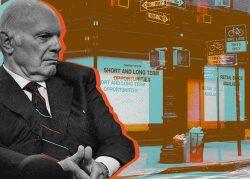
Urban retail not recovering like malls, shopping centers: Vornado
Trending
Suburban retail shines as urban shopping centers fade
Retailers shift from downtown locations to follow high demand beyond office districts

Office landlords’ loss is the suburban landlord’s gain.
The rise of remote and hybrid work is propping up suburban retail, which is faring better than urban retail districts that have relied on five-day-a-week office commuters, the Wall Street Journal reported. Retailers are increasingly shifting locations from cities to suburbs, while foot traffic in urban corridors is waning.
In urban downtowns, foot traffic was down 25 percent in April from 2019 levels, according to MRI Springboard. Shopping centers are on the other side of the pendulum, seeing visits on the rise.
Even high inflation and rising interest rates aren’t dampening the spirits of retail owners. Shopping center owner Site Centers reported record leasing in the first quarter, while competitor Phillips Edison reported record occupancy.
The urban retail market used to have a leg up on the suburban market, buoyed by the presence of daily commuters. Lunch spots in cities often didn’t lack for business. Lines for craft salads went out the door regularly.
In the second half of last year, however, urban retail availability blew past suburban availability for the first time since at least 2013, according to CBRE. As a whole last year, asking rent growth in the suburbs was superior to urban centers.
Suburban retail landlords enjoying the fruits of increased demand, foot traffic and asking rents have been ahead of the post-pandemic curve for some time. Vornado Realty Trust executives in a Feb. 2022 earnings call bemoaned how malls and shopping centers were recovering faster than retail districts in big cities.
Speaking of salads, Sweetgreen is one of the many chains embracing the new work patterns. At the end of 2019, roughly 35 percent of the company’s footprint was in the suburbs. As of last summer, that was up to 50 percent.
“We just want to be where the mouths are, whether they’re at home or in the office,” said fast-casual eatery CEO Tracy Kim, acknowledging some will never return to the office — and the urban centers in which they’re often located — five days a week.
— Holden Walter-Warner
Read more

Retail real estate continues climb, reaches record low availability





